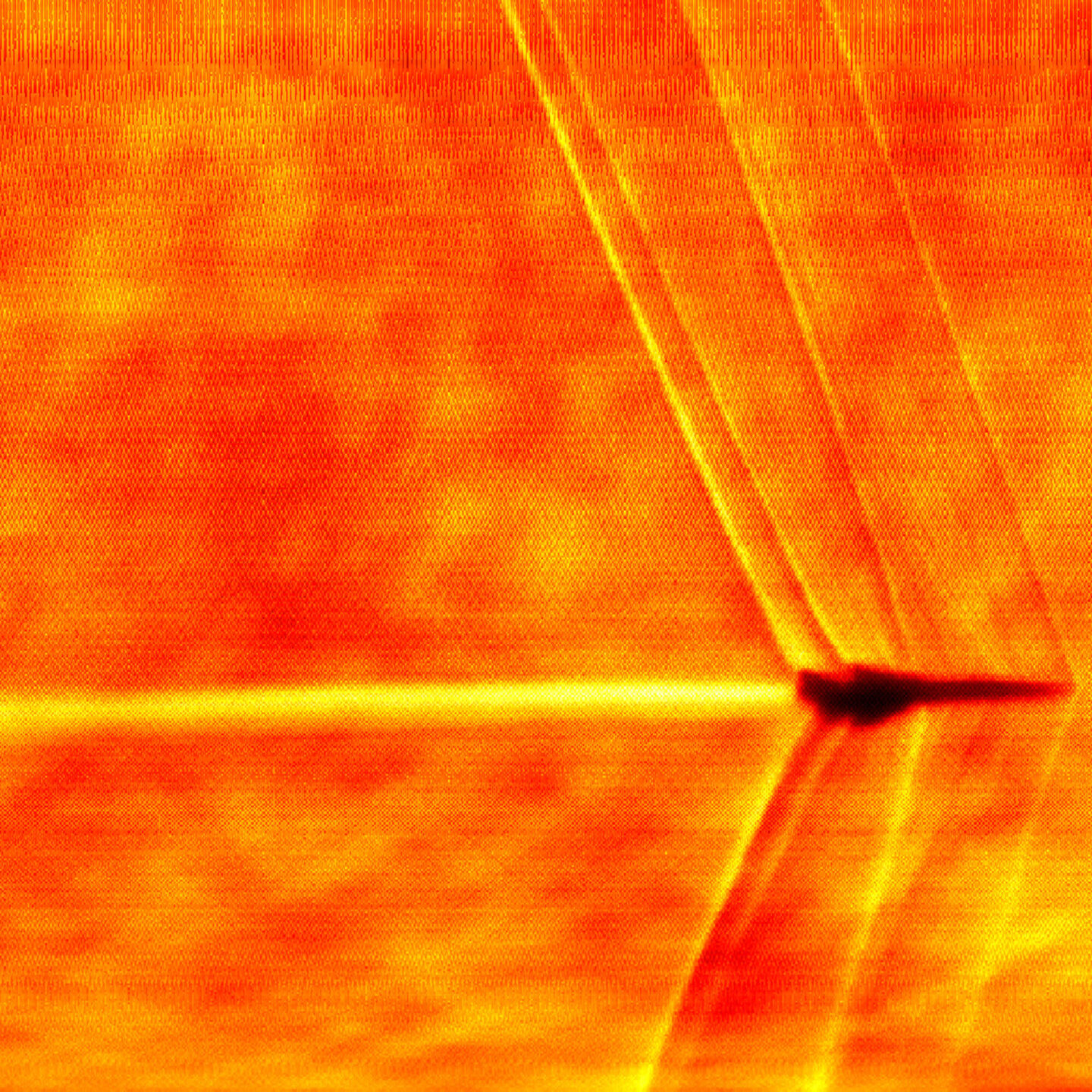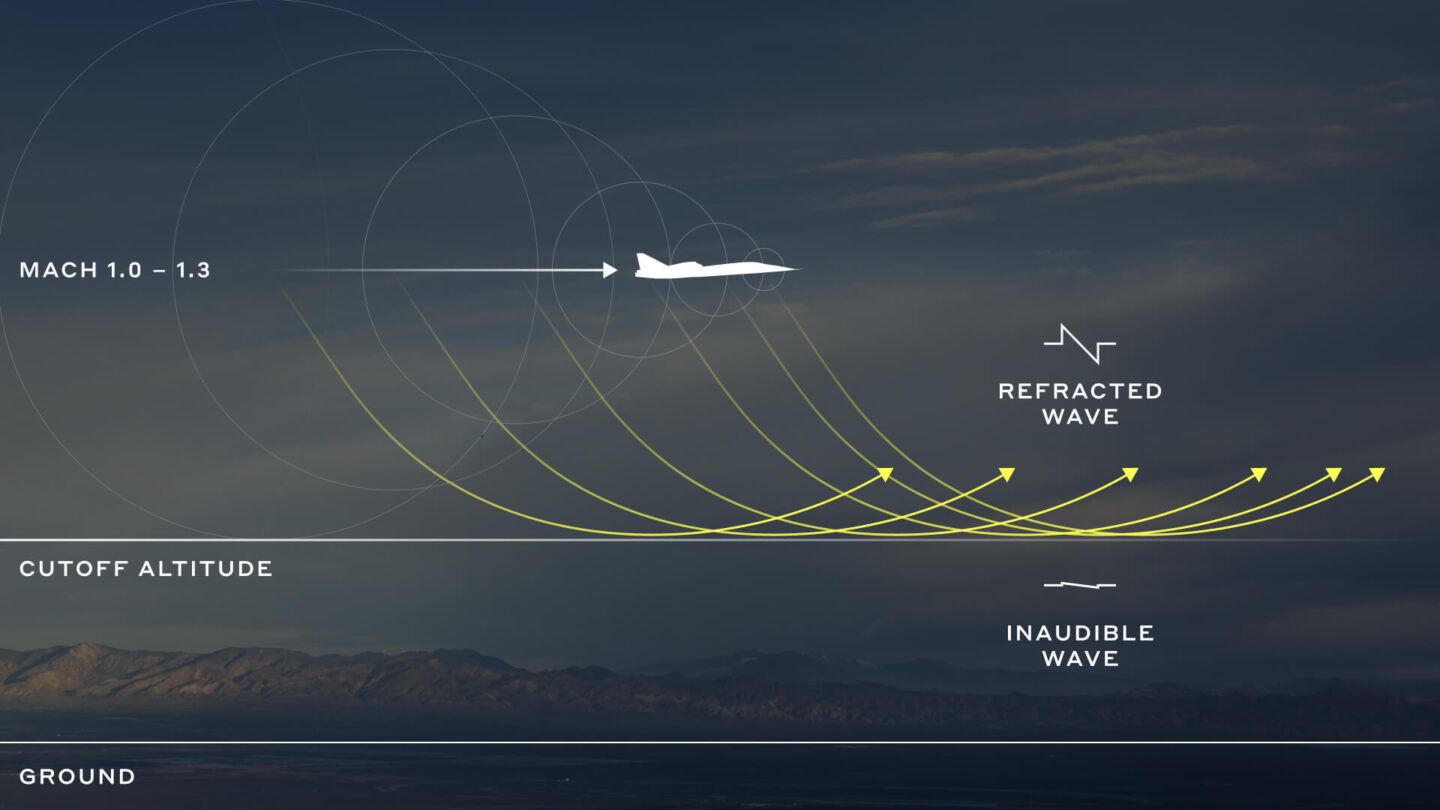NASA has released a new image showing the moment Boom Supersonic’s XB-1 jet broke the sound barrier without producing an audible sonic boom.
ADVERTISEMENT
Boom Supersonic, the company aiming to create commercial planes that can travel faster than the speed of sound, have successfully tested their XB-1 jet. According to the company and NASA, the jet was able to fly without producing a sonic boom that was audible from the ground.
During the first flight on January 28, the team placed microphones along the plane’s flight path at ground level. Despite traveling at a top speed of Mach 1.12, no associated boom was picked up.
“XB-1 broke the sound barrier three times during its first supersonic flight – without an audible boom,” Blake Scholl, Founder and CEO of Boom Supersonic, said in a statement. “This confirms what we’ve long believed: supersonic travel can be affordable, sustainable, and friendly to those onboard and on the ground. With this success, we’re bringing Boomless Cruise to Overture, unlocking faster travel on even more routes.”
As well as recording audio from the ground, NASA captured the second flight on February 10 using Schlieren photography.
“Much like how a hot surface in summer changes nearby air density, making objects in the background appear blurry, Schlieren photography uses bended light to create images of shock waves. Schlieren photography uses a textured background, such as the edge of the Sun or spots on the Sun, to visualize changes in air density created by an aircraft,” NASA Armstrong Public Affairs Specialist Jim Skeen explains of the technique.
ADVERTISEMENT
“As light rays flow around an aircraft, the change in air density caused by the airflow bends the light, making the edge of the Sun and sunspots appear to move. Software then calculates how each spot moved and reconstructs the shockwave into a Schlieren image.”
The result is a neat visualization of the jet breaking the sound barrier.

XB-1 jet going supersonic.
Image credit: NASA/Boom Supersonic
“This image makes the invisible visible – the first American made civil supersonic jet breaking the sound barrier. Thanks to [pilot] Geppetto’s exceptional flying and our partnership with NASA, we were able to capture this iconic image,” Scholl said in a statement. “We also confirmed that XB-1 made no audible sonic boom, which paves the way for coast to coast flights up to 50 percent faster.”
So, how did they achieve supersonic flight without an audible sonic boom? First off, what actually is a sonic boom?
ADVERTISEMENT
Sonic booms are the thunder-like booms heard when planes or other vehicles travel faster than the speed of sound, pushing air molecules aside with huge amounts of force, which goes on to form a shockwave.
“The shock wave forms a cone of pressurized air molecules which move outward and rearward in all directions and extend to the ground. As the cone spreads across the landscape along the flight path, they create a continuous sonic boom along the full width of the cone’s base. The sharp release of pressure, after the buildup by the shock wave, is heard as the sonic boom,” NASA explains.
“The change in air pressure associated with a sonic boom is only a few pounds per square foot – about the same pressure change experienced riding an elevator down two or three floors. It is the rate of change, the sudden onset of the pressure change, that makes the sonic boom audible.”
Despite improvements in aircraft design, there isn’t really any way to avoid creating a sonic boom, though careful design and smaller aircraft that displace less air than larger planes can produce quieter booms. One way that aircraft can create less disruptive sonic booms is to fly at higher altitudes. Paying attention to atmospheric conditions and adjusting speed accordingly, it is possible to produce a sonic boom which is refracted before it hits the ground.

Done right, the wave doesn’t reach the ground.
Image credit: Boom Supersonic
Having successfully demonstrated supersonic flight with no associated boom at ground level, Boom Supersonic is continuing to develop a commercial sound-barrier-breaking aircraft, dubbed Overture.
The company plans to fly the planes at Mach 0.94 – just below the speed of sound – when traveling over land, moving up to Mach 1.7 over water, in order to comply with current regulations. However, they say that their Boomless Cruise system can travel at Mach 1.3 without producing an audible boom, potentially reducing US coast-to-coast flight times by up to 90 minutes.
Further tests of the bespoke propulsion system will take place by the end of 2025, with pre-orders for the Overture plane totaling 130 from American Airlines, United Airlines, and Japan Airlines.
Source Link: NASA Image Shows XB-1 Jet Break The Sound Barrier Without Producing Audible Sonic Boom